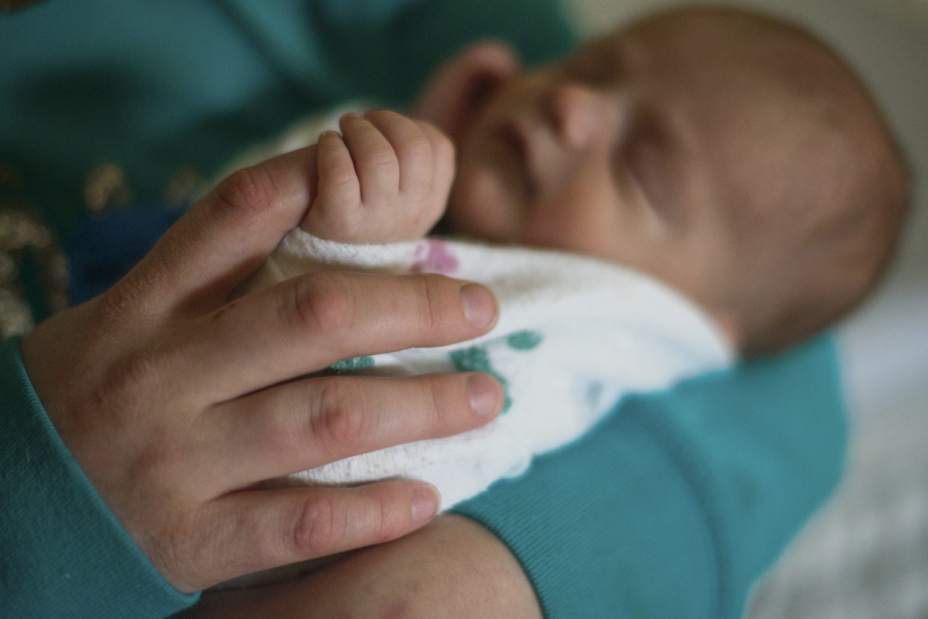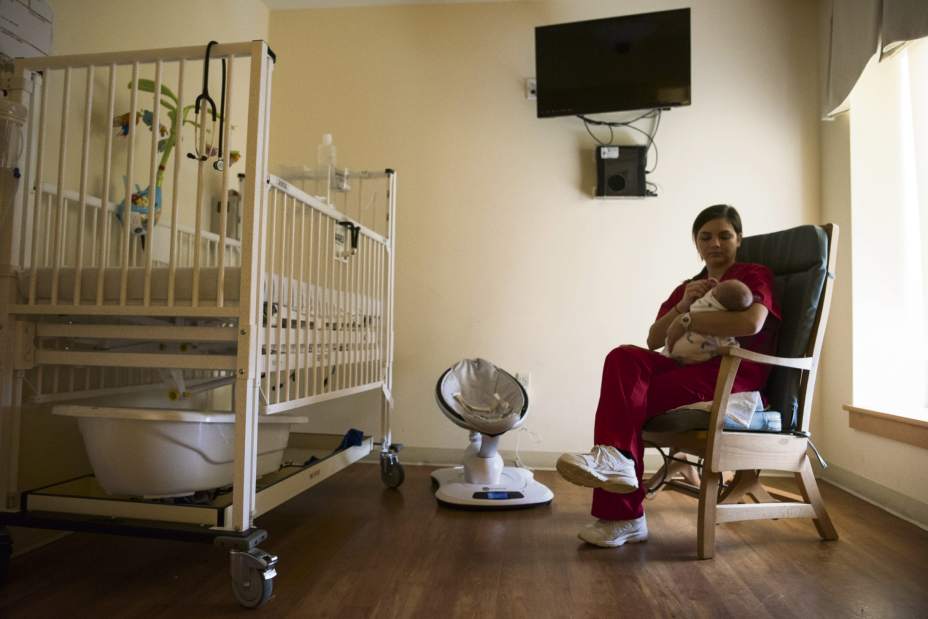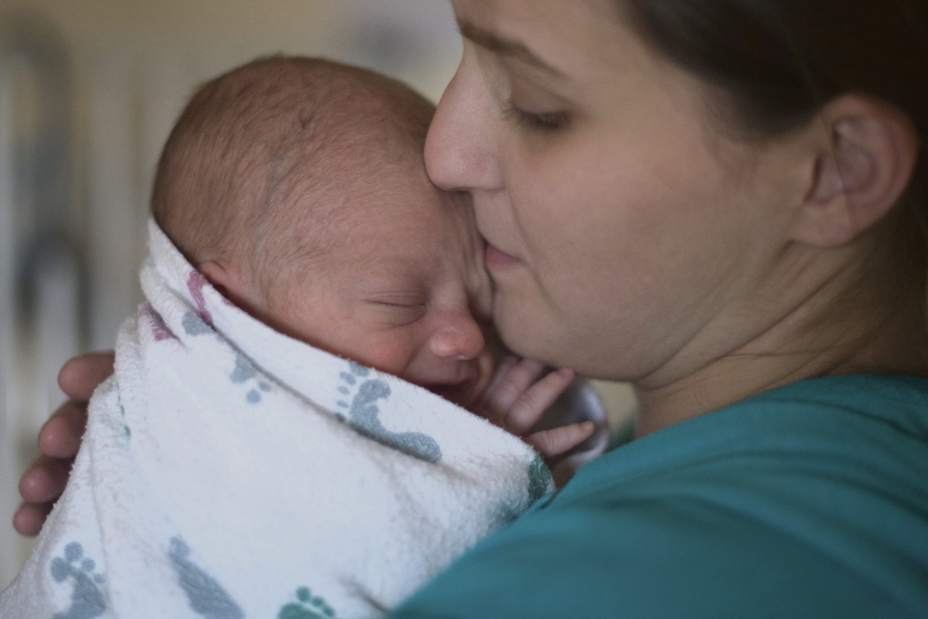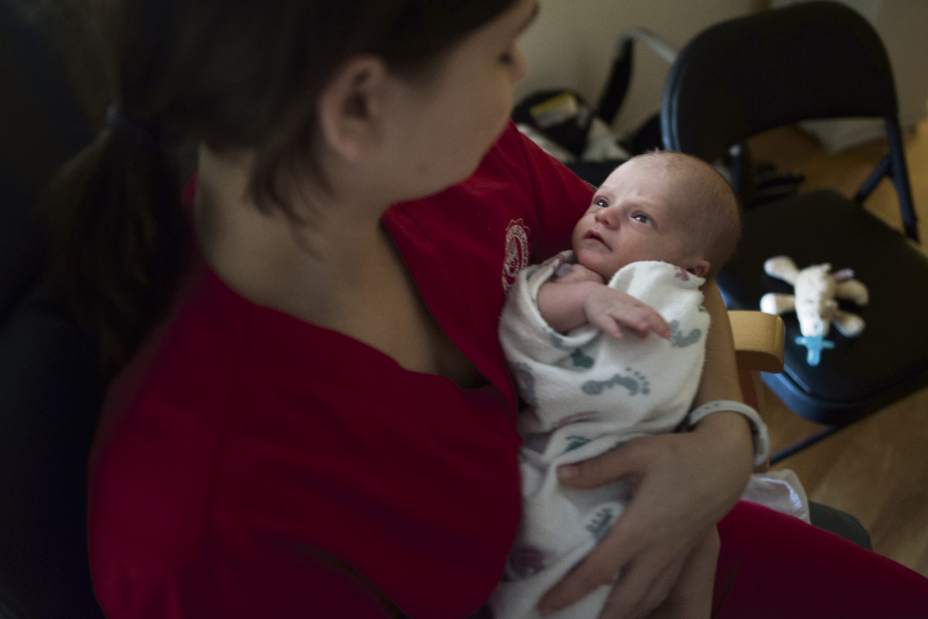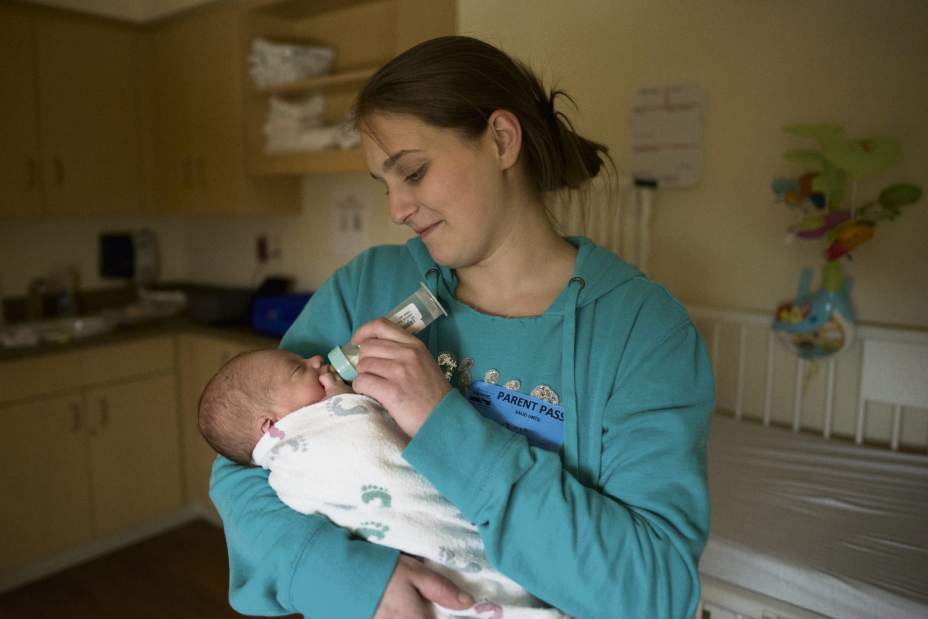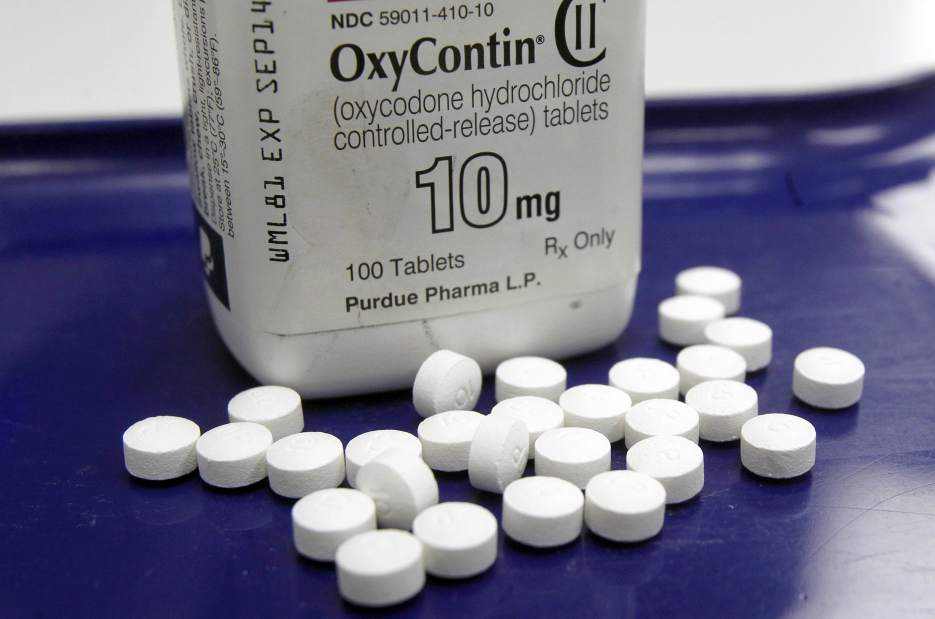At Children's Home, efforts to treat opioid epidemic's bystanders
Nurses at The Children's Home in Pittsburgh have developed an ear for the cry of an infant in withdrawal from drugs.
The sound, higher-pitched and more distressed than a regular cry, is one of the signs a baby needs morphine or one of the other medications used to wean the infant from substances he or she absorbed while in the womb, said Erin Colvin, the home's clinical director.
The home is treating more infants in withdrawal than ever, Colvin said, admitting babies with the condition at twice the rate of five years ago.
"We've seen a real increase in that population," Colvin said. "I think what we're seeing here is what's happening in the area."
As an opioid epidemic sweeps the region and the country, the 120-year-old institution in Friendship aims to provide a haven for families and healing for some of the epidemic's blameless bystanders, Colvin said.
Some of the babies were exposed in utero to illegal drugs. Others were exposed to methadone or buprenorphine, narcotics used to treat addiction to heroin and other opioids. Some women start treatment mid-pregnancy, neonatal doctors said, while others become pregnant after being in treatment for years.
During pregnancy, drugs affect babies' brains similarly to how they affect their mothers' brains, triggering areas associated with pain relief and euphoria, said Dr. Jennifer Kloesz, director of the neonatal intensive care unit at Magee-Womens Hospital of UPMC.
The babies aren't addicted the way adults are, but they become accustomed to the drugs and often experience withdrawal after birth, a condition known as neonatal abstinence syndrome, Kloesz said.
In addition to inconsolable crying, symptoms of the syndrome include jitters, sneezing, poor sleep, elevated temperatures, diarrhea and other discomforts.
Babies exposed to opioids in the womb are no more likely to be born with defects than other babies, and studies have shown no long-term negative effects of prenatal drug exposure, Kloesz said. Entering treatment is far better for babies than a mother's stopping drug use with no replacement, she added.
While the syndrome seems to cause no lasting physical harm to babies, its increasing prevalence — at The Children's Home and hospitals alike — is driving up health care spending and complicating births, according to neonatal doctors and a state agency that tracks treatment costs.
"It's a very complex problem, medically and for society," said Dr. Barbara Clouser, director of neonatology at West Penn Hospital's neonatal intensive care unit.
The average hospital stay is two days for a vaginal birth and three days for a c-section, Clouser said. Babies born with neonatal abstinence syndrome stay five to seven days or longer. The syndrome added about 28,000 patient days and $20.3 million in costs for neonatal hospital stays in 2015, according to a September report from the Pennsylvania Health Care Cost Containment Council.
New mothers can face extra stress because of the stigma surrounding addiction, and some try to hide addictions from their spouses or other family members after birth, Clouser said.
If a mother is found at birth to have been using illegal drugs, hospitals notify the county Office of Children, Youth and Families, the neonatal doctors said. They do not notify the agency if a mother is being treated with legal replacements.
Hospitals may keep the babies for weeks or months or may transfer them to The Children's Home based on availability and patient preference.
In either setting, treatment revolves around administering decreasing doses of drugs until babies can go 24 hours without showing signs of withdrawal, Colvin said. Babies' stays at the home range from two to four weeks, on average, but some require months of treatment, she said.
Neonatal abstinence syndrome accounted for 28 percent of the home's 374 admissions for the fiscal year that ended in June, according to figures Colvin provided.
That's up from 14.5 percent of the home's 283 admissions for fiscal year 2011, according to the figures. In addition to drug withdrawal, the home treats children up to 21 years old for conditions ranging from cardiac issues to meningitis to diabetes to cystic fibrosis, Colvin said.
!function(e,t,n,s){var i="InfogramEmbeds",o=e.getElementsByTagName(t),d=o[0],a=/^http:/.test(e.location)?"http:":"https:";if(/^/{2}/.test(s)&&(s=a+s),window[i]&&window[i].initialized)window[i].process&&window[i].process();else if(!e.getElementById(n)){var r=e.createElement(t);r.async=1,r.id=n,r.src=s,d.parentNode.insertBefore(r,d)}}(document,"script","infogram-async","//e.infogr.am/js/dist/embed-loader-min.js");
The home can be a respite after the bright lights, bustle and noise of a hospital, Colvin said, and many of its clients are referred by past clients.
The 30-bed facility on Penn Avenue includes 22 private rooms, and there are eight rooms in the family living center — an area that includes kitchens, laundry facilities and other amenities.
"You don't feel like you're in a hospital; you might feel like you're in a hotel," Colvin said.
In addition to administering regular oral doses of morphine to treat babies in withdrawal, staff and volunteers at the home hold the babies, offer massages and soothe them in low-light settings, which they say helps the babies recover more quickly.
The home has a room full of clothes, toys and games to give to children. Social workers help people learn to navigate public services after they leave the home. Some people receive gift cards for gas or groceries to help them remain stable during and after their stays.
The home has a big playground and large yard, where staff members encourage parents to walk with their children before going home.
Wes Venteicher is a Tribune-Review staff writer. Reach him at 412-380-5676 or wventeicher@tribweb.com.

